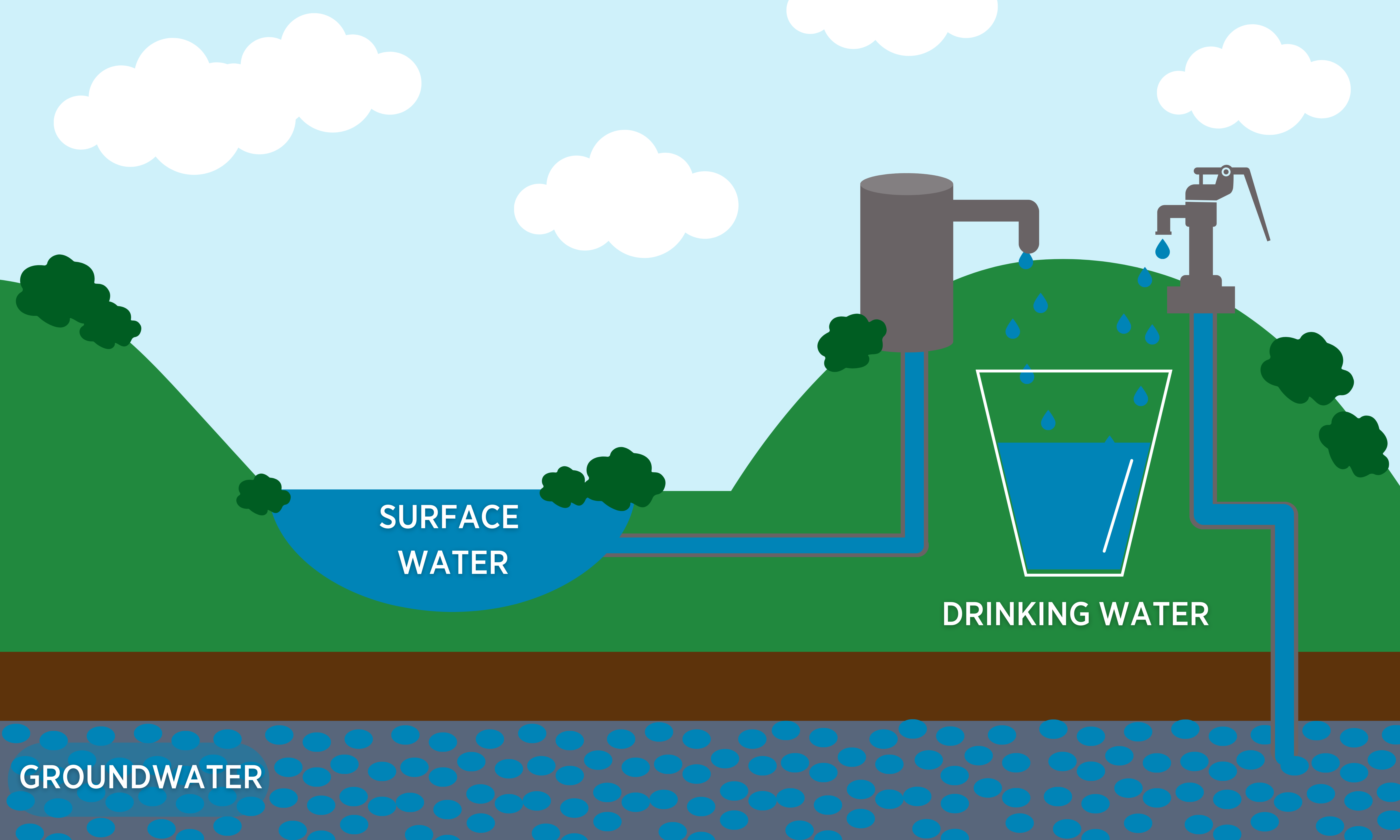PFAS
Forever Chemicals in Our Water
What are PFAS?
PFAS (per- and polyfluoroalkyl substances) are a group of chemicals that have been used in products for both home and manufacturing use since the mid 1900s. The most common of these chemicals are Perfluorooctanoic Acid (PFOA) and Perfluorooctane Sulfonate (PFOS). Often referred to as “forever chemicals,” they break down very slowly and build up over time if left untreated. Although much of the research on PFAS is recent, scientists have determined that exposure to and consumption of PFAS is extremely harmful to both the health of humans and the environment.
PFAS are found in fire extinguishing foam, many household products, personal care products, and food packaging, as well as a variety of manufacturing and chemical production facilities. Often finding their way into our waters, PFAS can be ingested by drinking contaminated water or consuming fish and other animals that are in contact with contaminated water.
Are There PFAS in the Milwaukee River Basin?
Locally, PFAS have been found in the Milwaukee River Basin, especially in the areas around Mitchell Airport where firefighting foam is used frequently. PFAS make their way into Wilson Creek, the Kinnickinnic River, and Lake Michigan, heavily contaminating groundwater in the area.
Voluntary testing has been taking place in recent years to better identify affected waters. To learn more, read about locations in Wisconsin where PFAS have been found and visit EWG’s interactive map of suspected industrial discharges of PFAS.
Why Should You Care About PFAS in Wisconsin?
More than 99% of the state’s public water systems use groundwater sources. Not only do roughly 400,000 people in the Milwaukee River Basin rely on groundwater for their drinking water, but 4 million people throughout Wisconsin do as well. Although research is currently in progress to better understand the effects of PFAS, existing research shows that exposure to these chemicals can cause the following health effects:
- Decreased fertility & increased high blood pressure in pregnant women.
- Developmental effects or delays in children, including low birth weight, accelerated puberty, bone variations, or behavioral changes.
- Increased risk of some cancers, including prostate, kidney, and testicular cancers.
- Reduced ability of the body’s immune system to fight infections, including reduced vaccine response.
- Interference with the body’s natural hormones.
- Increased cholesterol levels and/or risk of obesity.
What Does Milwaukee Riverkeeper Support?
We want to see stronger regulation of PFAS at both the State and Federal Levels, as well as more funding for clean-up and monitoring of the chemicals. As of June 2023, the State Senate has proposed $125 million for PFAS clean-up.
While we strongly support the new funding for cleanup, the current legislation places several limitations on the Wisconsin DNR and its ability to effectively mitigate the issue. We were excited to see Wisconsin formally set a regulation on PFAS in drinking water, but the set limit (70 ppt) on the combined amount of PFOA and PFOS in drinking water is not strict enough. The EPA advises that drinking water contains no more than 0.004 ppt of PFOA and 0.02 ppt of PFOS. Additionally, there are currently no state regulations on PFAS in groundwater. We continue to advocate for stronger regulations in addition to more public awareness of these forever chemicals.
What Can You Do to Help?
- Donate to support our testing of PFAS. Testing kits are expensive and donations help to provide us with the necessary equipment to do our own monitoring.
- Sign up for updates from Milwaukee Riverkeeper to make sure you are receiving the latest information on PFAS and how you can get involved.
- Contact your representatives to strengthen PFAS community grants legislation.
Our Partners
Citizens for Safe Water Around Badger (CSWAB)
Additional Resources & Recent News
Article: “Senate Republicans fail Wisconsinites on safe drinking water” (November 2023)
Wisconsin Public Water Systems Annual Drinking Water Report (2022)
PFAS bill, set to be amended, gets Assembly hearing – Wisconsin Examiner
Wisconsin Republicans allow PFAS standards to take effect | Great Lakes Now
Types of Water
The water you drink comes from either surface water, such as lakes and rivers, or groundwater that is stored underground in between rock particles. For those within the Great Lakes Basin, your drinking water likely comes from Lake Michigan, which is considered surface water.
When laws or regulations are created for water, the type of water must be specified. For example, the limits of certain chemicals allowed in water are different for surface, drinking, and groundwater. In Wisconsin, there are currently limitations set for PFAS in both surface and drinking water, but not groundwater.

